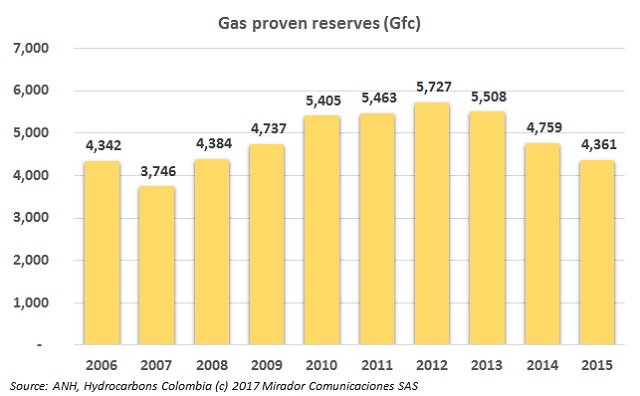Colombia is betting on offshore exploration in the Caribbean Sea and Ecopetrol (NYSE: EC) announced gas discovery in the Kronos field a few months ago. This has generated optimism in the industry because the field could be very important for the country.

GasColombia’s energy bet is natural gas; authorities are optimistic for the future. Orlando Cabrales, President of Naturgas, spoke about gas reserves and investments for coming years.
Prospects for this year are positive in the gas sector. Colombia will reactivate exploration especially in offshore fields. The industry will make large investments in E&P and infrastructure.

Canacol Energy Ltd. (TSX: CNE) announced its financial results for last year. The company achieved its production goal, made several new gas discoveries and reported an increase of gas sales. Company´s prospects for 2017 are optimistic.
In the past year, the gas sector invested CoP$1.2T to maintain the natural gas and electricity supply in the country.
Ecopetrol (NYSE: EC) wants to increase its gas production and the firm is looking for strategic alliances. The NOC will have a meeting with the Malaysian company Petroliam Nasional Bhd (Petronas).

Gas supply has been one of the main issues in the country. The government has identified the main investments that the natural gas industry needs to guarantee self-sufficiency in Colombia. .
The new resolution will define the conditions for biogas and biomethane service at a domestic and industrial level in Colombia in terms of quality, safety and tariffs.
The commitment to increase reserves is giving its first results. Ecopetrol (NYSE:EC) recent announcement of exploration´s results in the Colombian Caribbean boosted perspectives for this year.

The Sectorial Studies Direction of the General Comptroller conducted a discussion on natural gas and its supply. The Mining Ministry (MinMinas) and the Energy Mining Planning Unit (UPME) participated in the event.